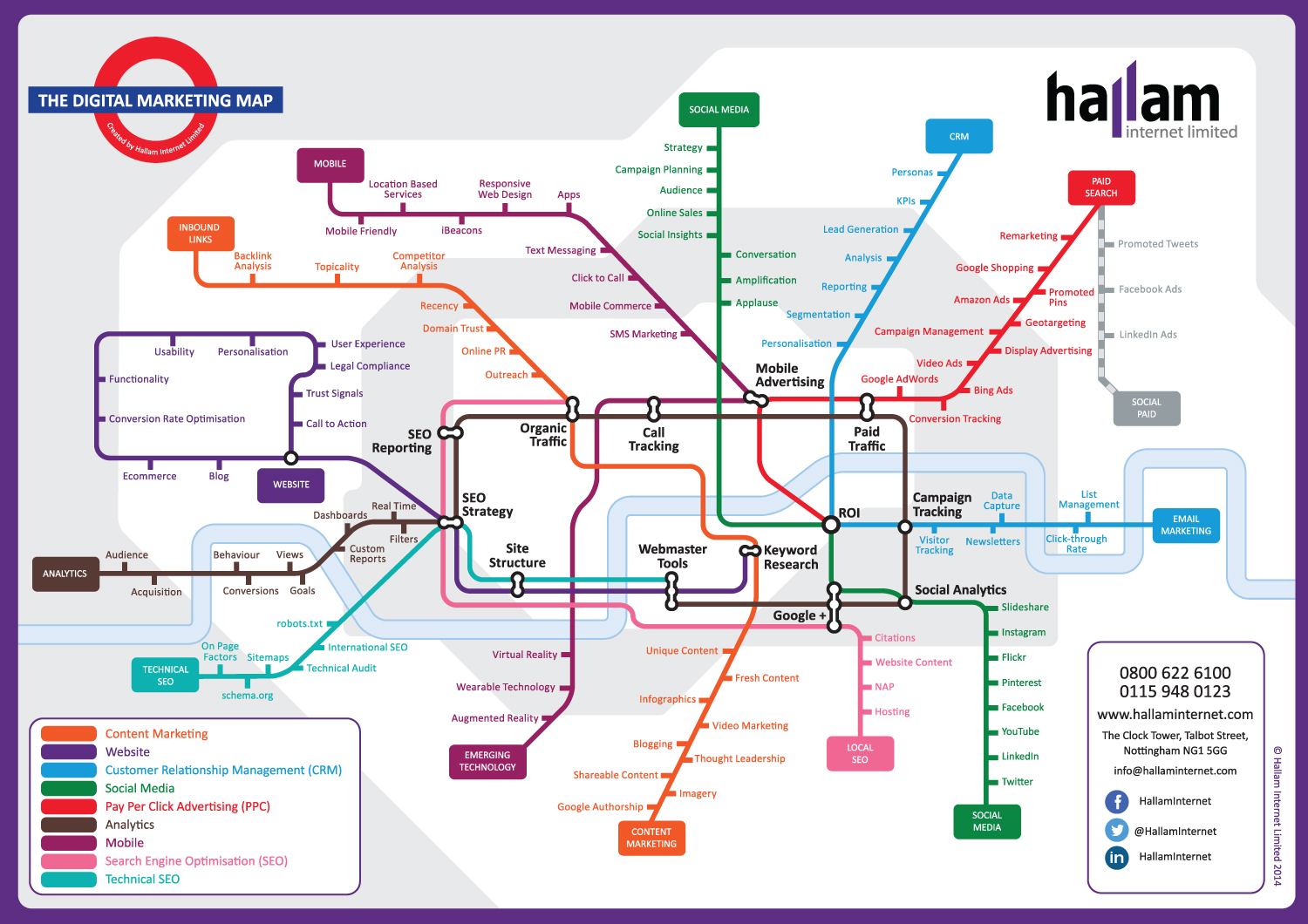Digital marketing is indeed a complex reality in need of better user experiences. Take one please.

Read more in the original post at Hallam Internet.
LivePA, EDM, IOT, UX, UI, XD, IA, CEM & a little MX.
Created and curated.

On ROI: “Marketers are still looking at likes and followers as those are the foundations of the social environments,” Watson says. These metrics are an easy way to measure how many people are using social to communicate with a brand. “But now we've expanded it to look at traffic sources and actual interactions we're having with customers across platforms.”
This speaks to a maturity in the analytics that enable this sort of insight, as well as marketing departments hiring more tech- and socially-savvy marketers familiar with tools that allow brands to see customer journeys more holistically—many of which begin and end on a social platform. Consider a public complaint about a lobster roll tweeted to @AuBonPain, an emailed apology and voucher, and the customer's thankful comment on the Au Bon Pain Facebook page.
For brands, the ultimate benefit to having this 360-degree customer view is that they'll be able to understand customer lifetime value. “Being able to look at the difference of revenue per user from a social customer versus customers on more traditional channels,” Watson explains. “And what impact do clicks really have on the bottom line.”
On geo-targeting: Geo-targeting is becoming so common in social media, it's practically table stakes at this point. Global brands have local presence and can optimize campaigns for specific geographies. “I don't think [this capability] is just coming from Foursquare,” Watson says, “but from mobile ad providers, LinkedIn, Twitter, and it's an expectation at the ad-network level and publishing-provider level.”
It's this latter area where geo-targeting has yet to catch on, Watson explains. The way ad networks geo-locate—by a device's IP address—makes it difficult to implement the capability, especially because there aren't any industry-wide standards. By contrast, social networks typically geo-locate based on where a user says he or she is, and publishers do the same based on an in-house database that describes where their users are. Both, of course, might have accuracy issues—but at least it avoids the complication of a single user owning three different connected devices and thus, three different IP addresses.
“Geo-targeting should be table stakes,” Watson says. “But until it's fully integrated into the ad networks, and multiple ad purchases [under] one set of geo-targeting rules can be deployed across multiple publishers, it's still a work in progress.”